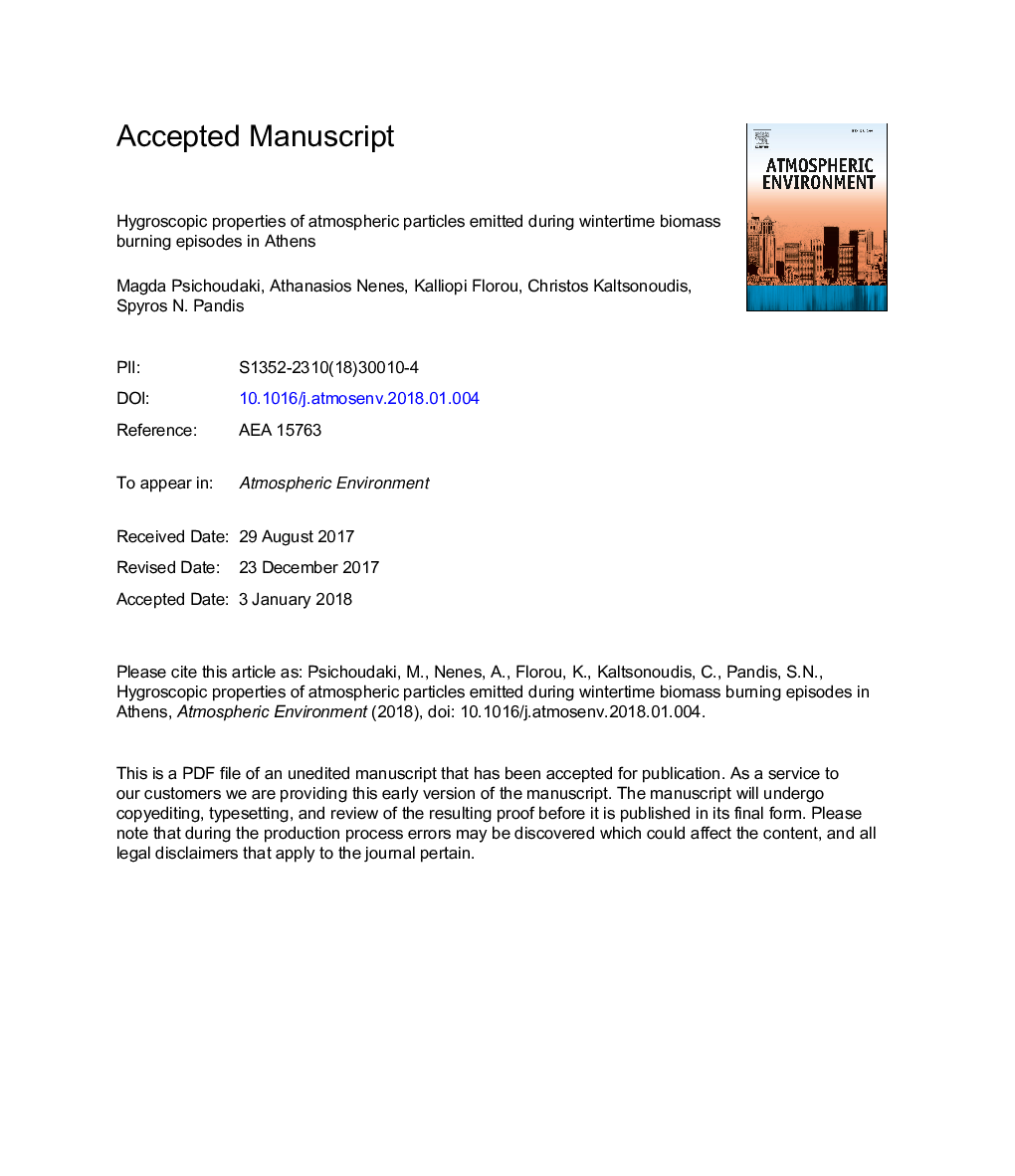| Article ID | Journal | Published Year | Pages | File Type |
|---|---|---|---|---|
| 8864004 | Atmospheric Environment | 2018 | 28 Pages |
Abstract
During the day, the organic fraction of the particles was more than 50%, reaching almost 80% at night, when the fireplaces were used. Positive Matrix Factorization (PMF) analysis revealed 4 factors with biomass burning being the dominant source after 18:00 until the early morning. The CCN-based overall hygroscopicity parameter κ ranged from 0.15 to 0.25. During the night, when the biomass burning organic aerosol (bbOA) dominated, the hygroscopicity parameter for the mixed organic/inorganic particles was on average 0.16. The hygroscopicity of the biomass-burning organic particles was 0.09, while the corresponding average value for all organic particulate matter during the campaign was 0.12.
Keywords
Related Topics
Physical Sciences and Engineering
Earth and Planetary Sciences
Atmospheric Science
Authors
Magda Psichoudaki, Athanasios Nenes, Kalliopi Florou, Christos Kaltsonoudis, Spyros N. Pandis,
